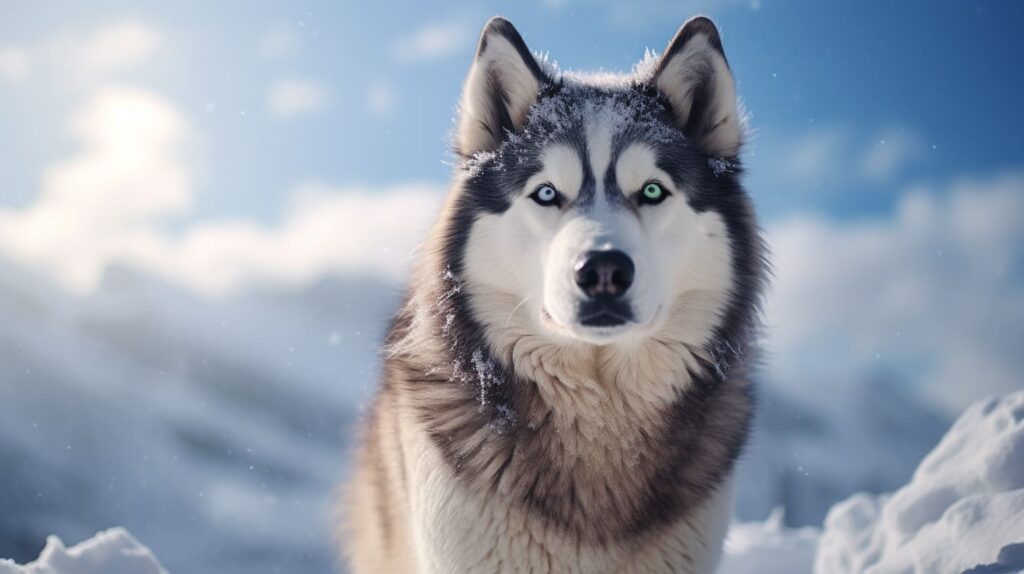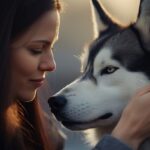Have you ever looked into the eyes of a Siberian Husky and been captivated by their strikingly different eye colors? One eye might be a deep, oceanic blue, while the other is a warm, earthy brown. This unique trait, known as heterochromia, is a fascinating phenomenon that is visually stunning and a testament to the complex world of canine genetics. This article will delve into the captivating world of Huskies’ eye colors, debunk some myths, and even explore how these different eye colors affect their vision. So, please sit back, relax, and let’s embark on this eye-opening journey together.
Understanding the Genetics Behind Huskies’ Eye Colors
The world of genetics is like a complex puzzle, and when it comes to Huskies’ eye colors, the pieces fit together in a particularly intriguing way. Why do huskies have different colored eyes? Well, the color of a Husky’s eyes is determined by multiple genes that control the distribution of melanin, the pigment responsible for color in both the skin and eyes. The more melanin present, the darker the eye color.
In Huskies, the gene that often takes center stage is known as the Merle gene. This gene dilutes the color in certain parts of the eye, leading to lighter shades such as blue or green. However, the Merle gene isn’t the only player in this genetic game. Other genes can influence eye color, leading to a wide range of possibilities, from deep brown to bright blue, and even combinations of the two.
The Phenomenon of Heterochromia in Huskies
Heterochromia, the condition where each eye is a different color, is a common trait in Huskies. This captivating phenomenon is a result of how the Merle gene interacts with other genes. If the Merle gene is active in one eye but not the other, the result can be one blue eye and one brown eye.
Heterochromia doesn’t just occur in Huskies; they are one of the breeds where it’s most common. According to a study published in the Journal of Heredity, about 40% of Huskies have blue eyes, while around 5% have one blue and one brown eye. This genetic quirk makes Huskies one of the most visually striking breeds, and it’s one of the reasons they are so beloved by dog enthusiasts worldwide.
How Different Eye Colors Affect Huskies’ Vision
Now, you might be wondering, do these different eye colors affect a Husky’s vision? The answer is, not really. Despite the differences in color, the structure and function of a Husky’s eyes are the same, regardless of whether they’re blue, brown, or a mix of both.
However, it’s worth noting that blue-eyed Huskies may be more sensitive to bright light. This is because blue eyes have less melanin, which helps protect the eye from the sun’s harmful UV rays. But don’t worry, this doesn’t mean your blue-eyed Husky needs a pair of doggy sunglasses. They’re perfectly capable of squinting or seeking shade when the sun gets too bright.
Debunking Myths About Huskies with Different Colored Eyes
Despite the scientific explanations behind Huskies’ eye colors, there are still plenty of myths floating around. One common myth is that Huskies with different colored eyes have sight problems or are more prone to health issues. This is simply not true. Heterochromia does not affect a Husky’s health or vision.
Another myth is that all Huskies have blue eyes. While blue eyes are common in the breed, not all Huskies have them. In fact, according to the Siberian Husky Club of America, Huskies can have blue eyes, brown eyes, one of each, or even one eye that is part blue and part brown.
In conclusion, the world of Huskies’ eye colors is a fascinating blend of genetics and myth. Whether your Husky has blue eyes, brown eyes, or a mix of both, one thing is for sure: their captivating gaze is just one of the many reasons we love these incredible dogs.






